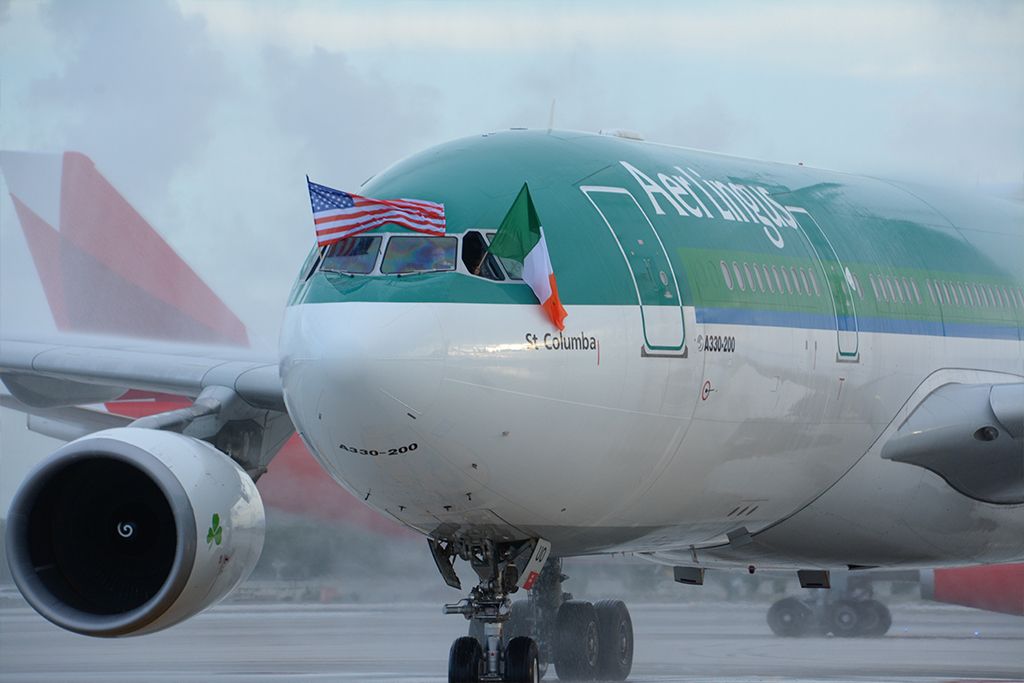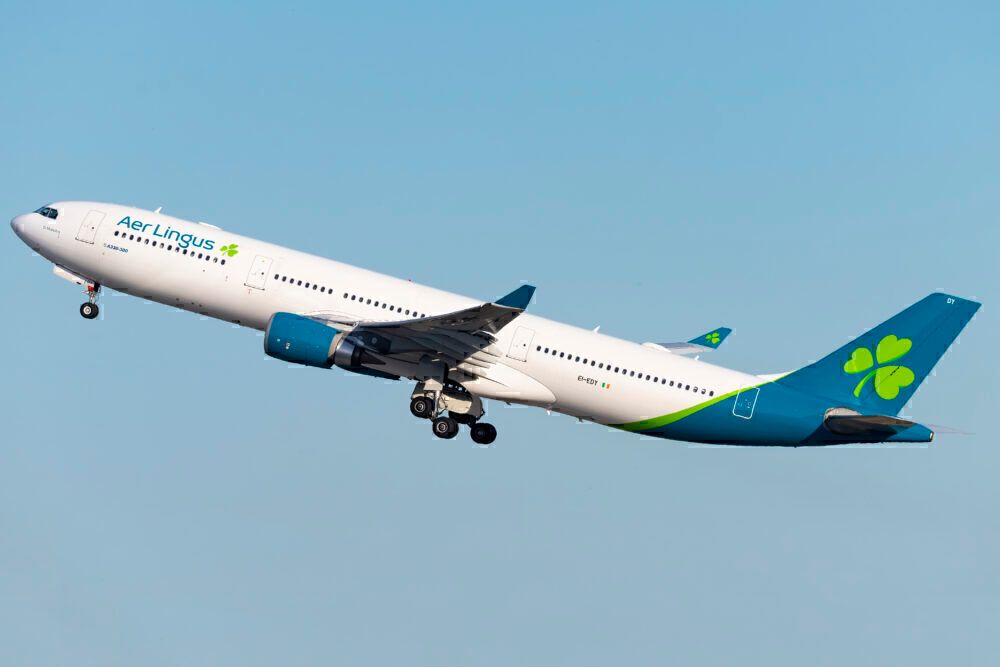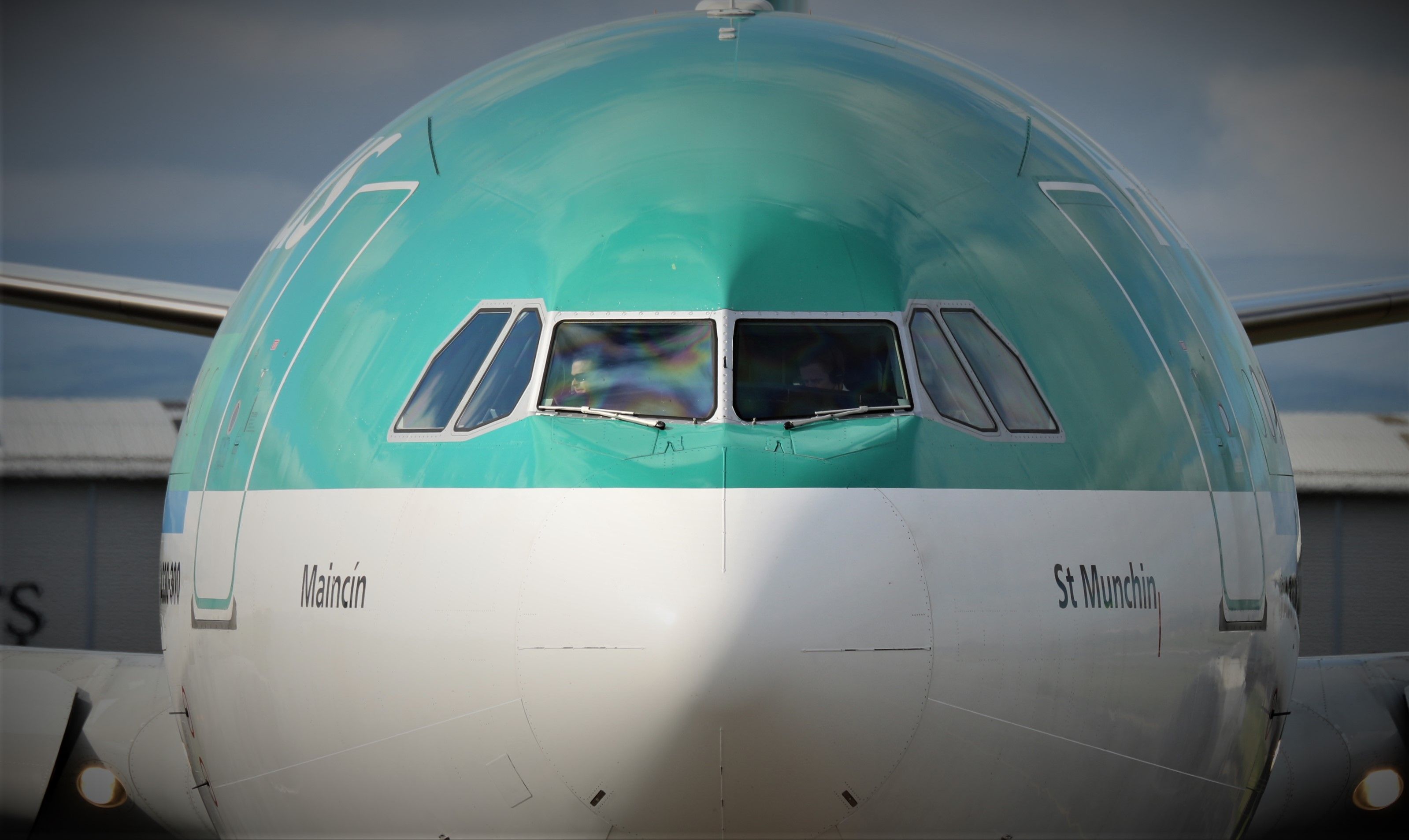Dublin to Miami will return after a two-and-a-half-year absence. It was last served in April 2020, soon after the impacts of the pandemic were felt worldwide. It will come one day short of a year after Aer Lingus UK's first service – from Manchester to Barbados – took off.
Miami to return
Aer Lingus will recommence Miami on October 21st. It'll initially operate on Fridays and Sundays but will be joined by a Wednesday service from November 2nd. The schedule in October is as follows, with all times local. As you'd expect, it'll use the same times it had before it was suspended:
- Dublin to Miami: EI141, 15:30-19:45
- Miami to Dublin: EI140, 22:00-11:15+1 the next day
The A330-300 will operate the 4,165-mile (6,703km) service. The Irish flag carrier has 10 of the larger twin-aisle aircraft, not all active, with one currently wet-leased to Vueling.
The type has 30 fully flat beds in business in a staggered configuration, with four to five seats per row. Economy seats vary, from 283 (on EI-GAJ and EI-GCF) to 287 on the rest, all in a 2-4-2 layout. Its A330-300s have up to 317 seats.
Stay aware: Sign up for my weekly new routes newsletter.
Aer Lingus to Miami: a quick history
The South Florida airport, the fastest-growing airport in the US this winter, joined Aer Lingus' network in September 2017. It came almost exactly a decade after Orlando launched. While you might think Miami would be winter-seasonal, it was year-round. It used the smaller A330-200, all currently stored in either Nîmes or Ciudad Real, ch-aviation.com indicates.
According to OAG, Miami operated three-weekly from the start of service until June 2019, when it reduced to twice-weekly during the peak summer. It rose to four-weekly, its highest ever, between mid-November and Christmas 2019. It seems reasonable that it'll return at three-weekly, especially going into winter, albeit with the larger variant.
77.2% seat load factor in 2019
Department of Transportation T-100 data, available via Cirium, shows that Dublin-Miami had a seat load factor (SLF) of 77.2% in 2019. As it was still relatively new, it was lower than its average to the US that year (84.5%). Only Minneapolis had lower – hardly surprising when it started in September 2019.
It takes a while for markets to develop, especially long-haul, and Miami was no exception. It had a SLF of 71.4% in 2018, its first full calendar year, nicely rising to 77.2% the following year. It appeared to be going in the right direction, but fares must be considered for a fair assessment.
Notably, the SLF rise was only partly from the route becoming more established. It was also from the summer frequency reduction, which resulted in 9.5% fewer available seats in 2019 and 4.7% fewer passengers total, with some 57,703 people transported.
Most passengers were point-to-point
Let's hope Aer Lingus' fare, yield, and overall performance were meaningfully improved from the capacity cut and more seasonal focus. As booking data suggests that over half of Miami passengers were point-to-point, which are ordinarily higher-yielding and cost less to carry as there's only one flight, this might be true.
However, a large chunk still connected over Dublin, mainly to/from the UK – no surprise! – mainly because of so many UK airports being served. Indeed, while Manchester-Miami was the biggest market, it was followed by Amsterdam-Miami, Paris CDG-Miami, Munich-Miami, and Bristol-Miami.
Have you flown Aer Lingus long-haul? Share your experiences in the comments.





